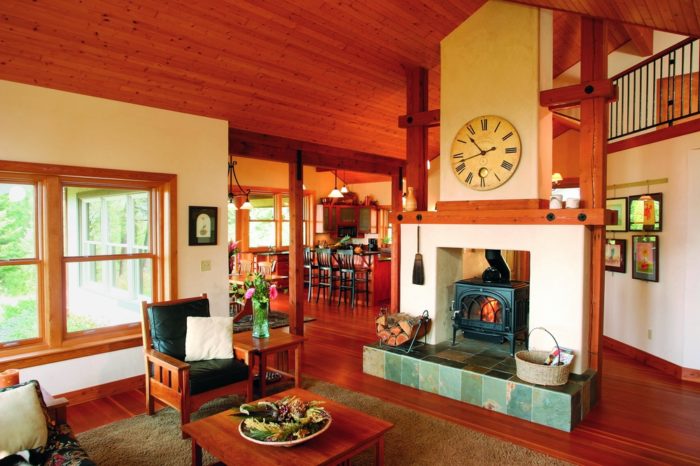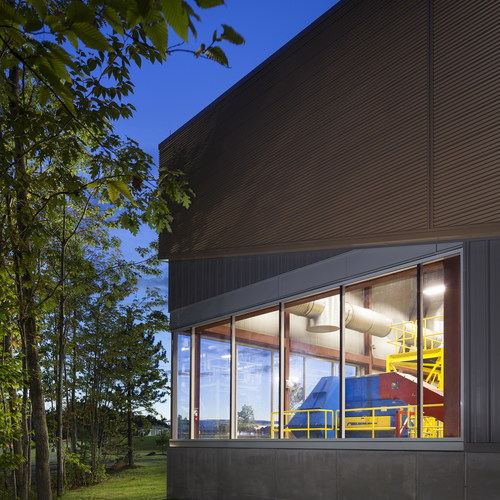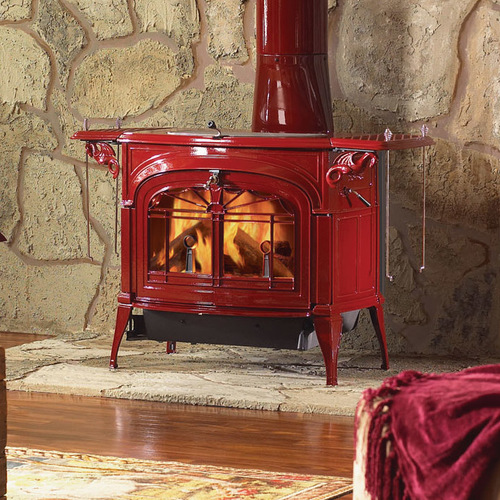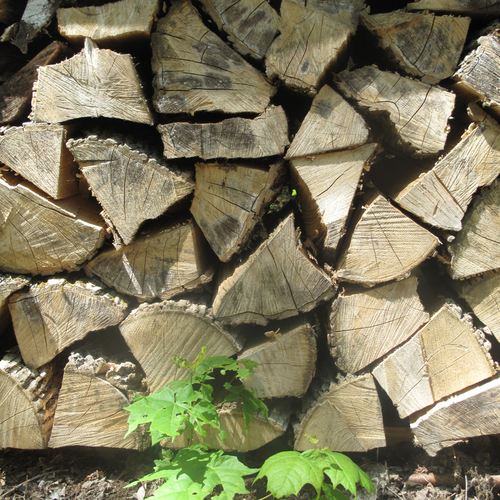
Image Credit: Justin Fink/Fine Homebuilding
Wood is a renewable fuel and, assuming that new trees grow up to replace those cut for firewood, it is carbon-neutral, meaning that it doesn’t have a net contribution to global warming. That said, wood burning also churns out a lot of air pollutants, some of which are highly visible as smoke. Fortunately, there’s a lot we can do to reduce the pollution generated by wood burning—and boost the efficiency.
Our discussion here focuses mostly on wood stoves; pellet stoves and larger central-heating wood boilers will be covered in future columns. Fireplaces, for the most part, shouldn’t be thought of as heating systems. They are aesthetic features that can add wonderful ambiance on special occasions—we use ours two or three times a year. But fireplaces burn very inefficiently, and they result in so much airflow up through the chimney that they can actually cause a net loss of energy. Cold air leaks into the house to replace all the room air going up the chimney, and this forces your central heating system to work harder.
Burning wood cleanly and efficiently depends on three primary factors: the choice of wood stove; how the wood is stored and managed; and operation of the stove.
Choosing a Clean-Burning, Efficient Wood Stove
The starting point in clean, efficient wood stove operation is the selection of the stove. Since July 1, 1990, all new wood stoves sold in the U.S. have been required to carry U.S. Environmental Protection Agency (EPA) certification. (The 1988 law banned the manufacturing of non-EPA-compliant wood stoves after July 1, 1988 and the sale of such stoves two years later.) The EPA standard for non-catalytic wood stoves is 7.5 grams per hour of emissions and for catalytic wood stoves 4.1 grams per hour. By comparison, older, non-certified wood stoves typically produce 40 to 60 grams per hour of pollution, according the EPA.
Instituting stringent air pollution standards for wood stoves was a bold and controversial move by the federal government. It put over 80% of wood stove manufacturers out of business because it was too expensive for smaller companies to change their designs. But it also dramatically reduced pollution from wood stoves and boosted combustion efficiency—reducing air pollution by as much as 85%.
Manufacturers achieved these improvements by significantly redesigning wood stoves—for example by insulating the firebox, adding baffles that lengthened the smoke path through the stove resulting in more complete combustion, and providing air-inlet holes above the combustion chamber to preheat combustion air. The new-generation, non-catalytic Vermont Castings Defiant NC 1610 and Encore NC 1450 wood stoves are the cleanest-burning models available, with EPA emissions ratings of less than 1 gram per hour, but all new wood stoves are far cleaner than their ancestors from two decades ago.
Properly Seasoning Firewood
The single most important factor for clean, efficient wood burning is using only dry wood. Wood should be seasoned at least six months off the ground and under cover after it is cut and split. Properly seasoned wood is usually deeply checked (checks are end-grain cracks that form as wood dries) and makes a hollow sound when two pieces are knocked together. If the moisture content of wood is high, that water evaporates as the wood is burned, which keeps the combustion temperature low. Even the most advanced wood stove will generate a lot of pollution and burn less efficiently if green (unseasoned) wood is used in it.
The six months’ drying of firewood should be considered a minimum. Ideally, several years’ worth of firewood should be kept on hand, with the oldest burned first. One way of organizing this is by stacking green wood outdoors, and then after a season or two moving a heating-season’s worth of wood into a fully covered shed, from which a supply is brought into the house as needed. Green wood should not be stored indoors because of the significant amount of moisture that it will introduce to the house.
In splitting firewood, keep the diameter of the split logs relatively small, especially for smaller wood stoves, so that there will be a lot of surface area during combustion. Smaller logs will also dry out more quickly.
Operating Wood Stoves Efficiently
To achieve optimal performance of a wood stove, it should be operated hot. Start the wood stove with crumpled newspaper and kindling. As the fire burns down, rake the coals toward the front or side of the stove, creating a mound (rather than spreading them out), and add several logs at the same time. In milder weather, build smaller fires, but still operate the stove hot, rather than keeping a large fire going and damping it down (restricting the air inlet). Regularly remove ashes so that air flow in the firebox is not impeded and there is plenty of room for wood.
Fortunately, there’s an easy way to tell how cleanly (and efficiently) you’re burning your wood stove: the smoke coming out of your chimney. If you generate lots of smoke, the combustion isn’t very complete and a lot of particulate (and other) pollution is being created. This may occur if the wood isn’t very dry, as noted above. A lot of smoke may also indicate that you’re not bringing enough combustion air into your wood stove—most wood stove have an air inlet control. If unsure about proper operation of your wood stove for optimal performance, consult with the company you bought it from or a chimney cleaning service.
To minimize pollution, never burn household trash, any manufactured or painted wood (including plywood and particleboard), or pressure-treated wood—burning any of these materials is illegal in Vermont.
Also avoid moldy or rotten wood and even driftwood (the salt may corrode the stove and stovepipe or result in toxic emissions).
For both safety and efficient operation, have the chimney or stovepipe cleaned at least annually. Build-up of soot can restrict the chimney draft and diminish stove performance. For safety, install smoke and carbon monoxide detectors and make sure they are functioning properly. Replace batteries on battery-powered detectors at least annually, or whenever the low-battery alert sounds.
Weekly Newsletter
Get building science and energy efficiency advice, plus special offers, in your inbox.















One Comment
Quality Information
The information on seasoning firewood is very important for all consumers of firewood. I don't think people truly understand how essential it is to burn only dry, seasoned firewood. Green firewood is usually considered over 50% moisture content and seasoned firewood is usually around 20%. It easily takes 6-18 months to properly dry.
One extremely effective way to season firewood is to cross stack it in a firewood rack with a properly fitted vinyl cover for days when it's raining or snowing. I suggest one storage rack for outdoors and (like you) one for indoors where you have a supply on hand for the immediate future.
Log in or create an account to post a comment.
Sign up Log in